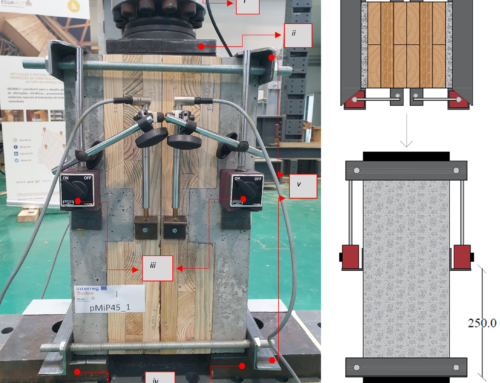Responsible partner: XERA (Spain)
Description: The presence of subterranean termites is common in Southern Europe and yet the regulations are different (or non-existent) in the various countries concerned such as Spain, France and Portugal. The main existing solutions to improve durability against subterranean termites and, in particular, their application to wood-based panels (CLT) was reviewed.
Among these solutions, appropriate construction design, the provision of anti-termite barriers, the application of chemical treatments, etc. were highlighted. The constructive design includes, among other things, measures to prevent moisture from entering the panels. This limits the possibility of subterranean termite attack. Other good practices can be found in the article on Experiment No. 9.

Figure 1. Installation of an anti-termite barrier at the base of the CLT panels. Project for a single-family house by Marta Trigas in Ames (A Coruña).
In addition to reviewing existing solutions, the impregnability of radiata pine and spruce was compared. Their suitability to receive different products, such as testa sealants, was also compared.
In the case of radiata pine CLT panels, after 24 hours floating in water, a coat of test sealer considerably reduces water absorption.

Figure 2. Efficacy test of one coat of test sealer on radiata pine CLT. The test specimens have been in contact with water for 24 hours.
With regard to solutions for improving the reaction to fire performance of CLT panels, a technology watch report has been contracted. As a result, more than 50 references of products marketed in Spain, France and Portugal were obtained. Each of the references includes products, distributors, sales formats, method of application, species of wood tested, certification obtained and other information of interest such as maintenance, as well as links to obtain technical data sheets of the products.
XERA has elaborated test specimens on spruce and radiata pine wood, applying a selection of 4 products, following the indications of each manufacturer. The test specimens were sent to the laboratory to obtain data such as the flame propagation speed and the self-extinguishing capacity of the material. The results of the tests will be analysed to determine possible differences between species and the effectiveness of the treatments applied.




